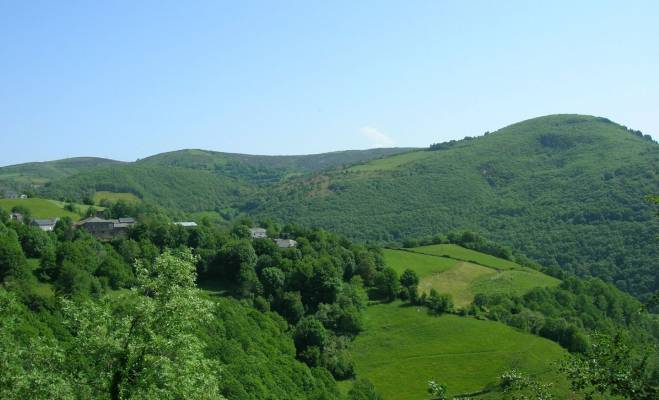| The Sierra O Courel is located in the southeast of the province of Lugo. It comprises the towns of Quiroja, Folgoso do Courel and Piedrafita do Cebreiro (on the French Route to Santiago). It covers a total area of 21,020 ha and is the most complete sierra of Galicia, from the geological point of view. It extends over one of the most important natural sites in the Iberian Peninsula. Deep valleys contrast with peaks over 1,500 m high, drawing a complex fluvial system. |
The materials that predominate are slates, schists and sandstones from the Paleozoic, combined with strips of quartzites and grey limestones. The landscape is characterized by the reliefs formed by quartzites. During the Hercynian Orogeny, many folds were bent towards the northwest. Later, these were smoothed by erosion. During the Alpine Orogeny, most of the blocks rose up, and the rivers began to run along the folds. That is why the summits of the range rise above 1000 , from the valleys below. The rivers that cross and border O Courel (Sil, Lor...) have preserved the remains of Roman mines, where gold was extracted from the alluviums.
O Courel offers a variety of landscapes, on account of the climatic contrast between the foot of the valleys and their summits. The lush vegetation include magnificent woods, such as the "devesas", usually located in steep areas, which consist of beeches, yews, holly trees, birches and maple trees. The "soutos", that can be found in the valleys, include chestnut woods.
The type of vegetation depends on the geographical situation of the sierra, between the Mediterranean and Eurosiberian influences. This is what determines the numerous vegetal species, adapted to the climatic and topographical conditions. At the end of the valleys grow species that are adapted to dry climates: holm oaks, cork oaks and bushes such as the strawberry tree, rockroses and lavender. Thickets of heather and Quercus pyrenaica grow at a maximum altitude of 1000 m, and above, Eurosiberian species such as the cork oak, beeches and birches that form thick woods.





